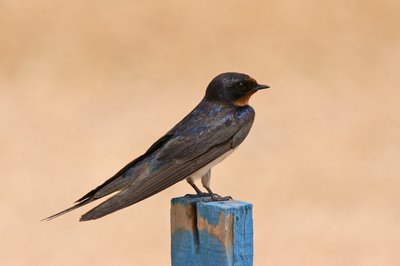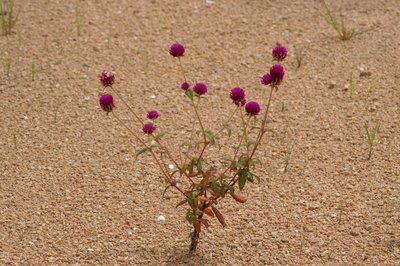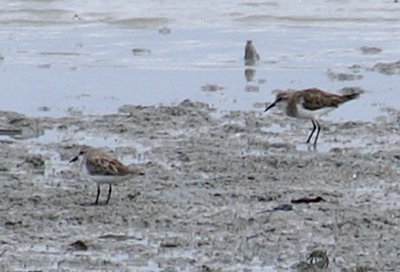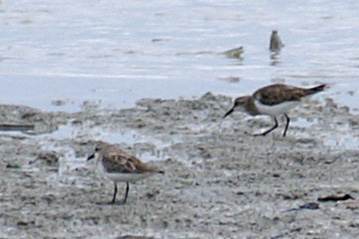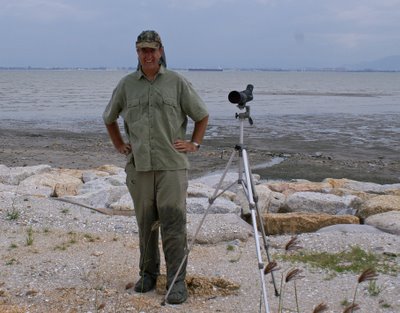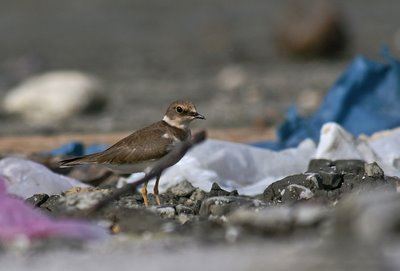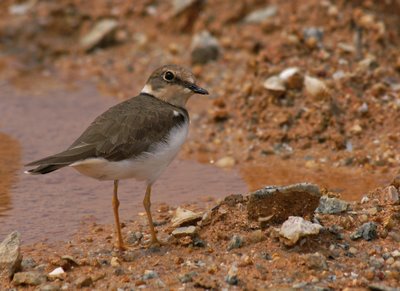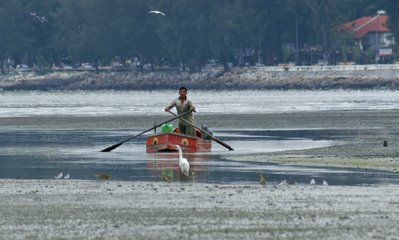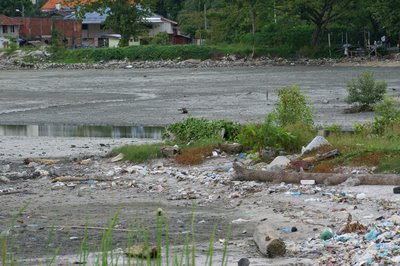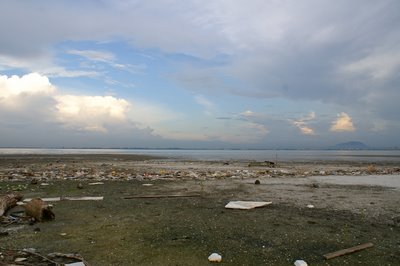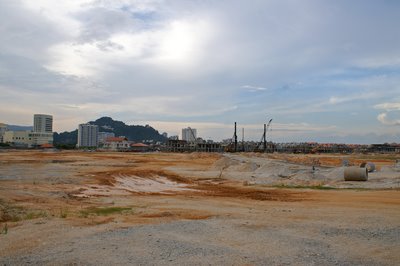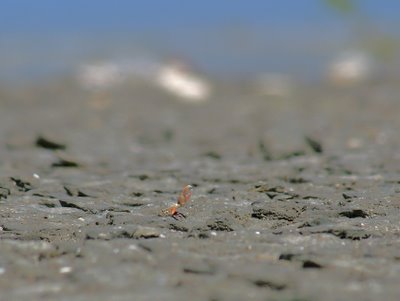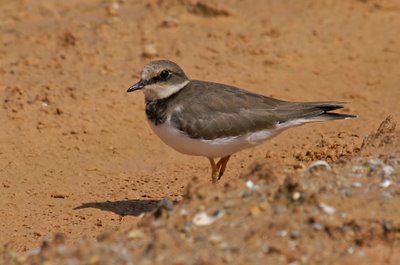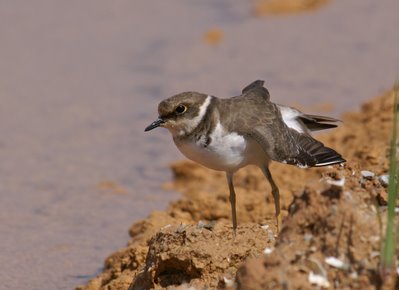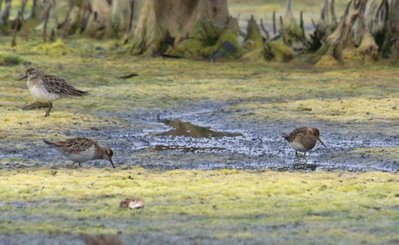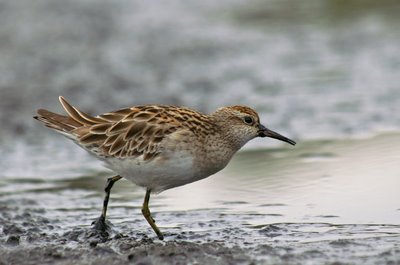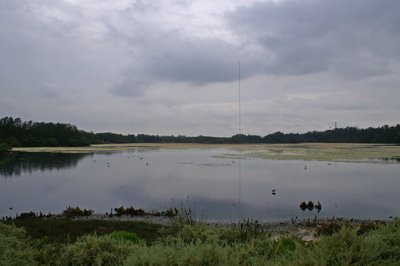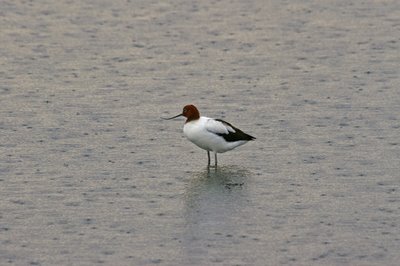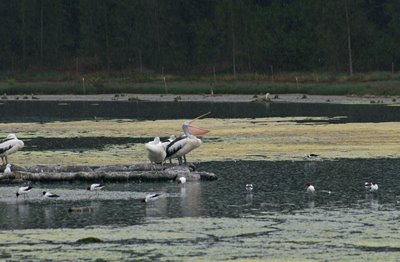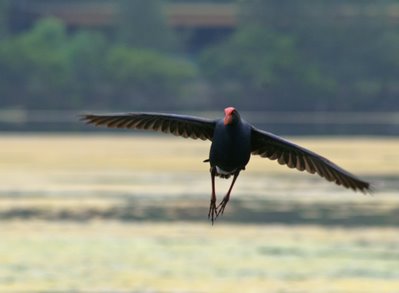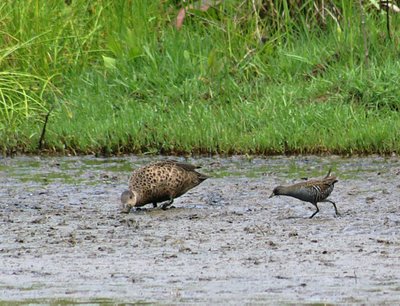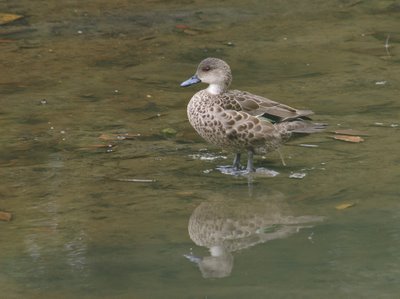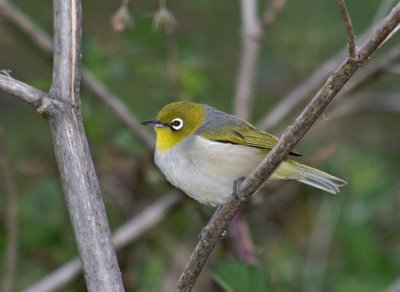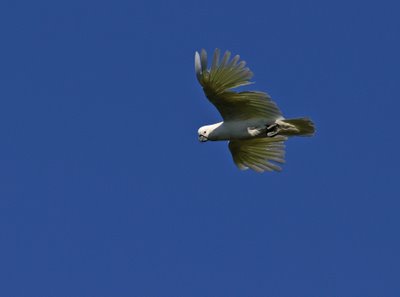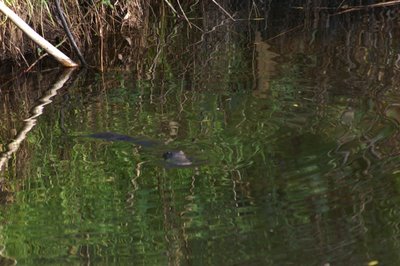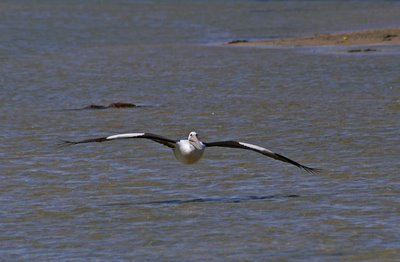It was good to see quite a few birds I don't get at TT, including Eurasian and Eastern Curlew, Brown-headed Gull and Common, Whiskered and White-winged Terns. There was also a smart breeding plumage Grey Heron. No Nordmann's Greenshanks today, though I didn't expect to see many at this stage of the tide. There was a Eurasian Collared Dove at Bagan Belat, which I assume to be an escaped cage-bird rather than a genuine vagrant. It seemed quite at home in the village environment.
From Bagan Belat I drove several miles inland to the area around Air Hitam Dalam. This used to be a beautiful area of swamp and mangrove along a river. Last year the powers-that-be decided that it should be developed as an 'eco-resort'. Now most of the riverine forest has been cleared, several roads are being constructed through it, and a canopy walkway has been erected through the few remaining trees. Actually, most of the work underway is in the construction of a major road past the area. The eco-resort seems to have been forgotten about. This isn't surprising, as there isn't much left to built a resort around. It all seems such a senseless waste.
I found that one or more likely several owls have been using one of the viewing towers as a roost or nocturnal hunting post, as it was covered with droppings and there were many pellets in evidence. No owls though.

There was a 1st winter Crow-billed Drongo flitting about in the trees, but it mostly kept high up, and out of decent range.
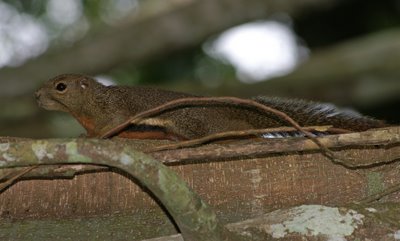
This squirrel was one of several seen here. If you know the speicific identity, please let me know! Thanks.
I spent quite a while driving through the paddyfields in the area. Most of them were full of well-grown green paddy, with just a few open areas where there was standing water. Notable birds were good numbers of Intermediate Egrets among the commoner Little, Great and Cattle Egrets and pond herons, a couple of Black-winged Stilts, a very few Wood Sandpipers, Swinhoe's or Pintail Snipes and a Black Kite.

A graceful Wood Sandpiper in typical habitat.
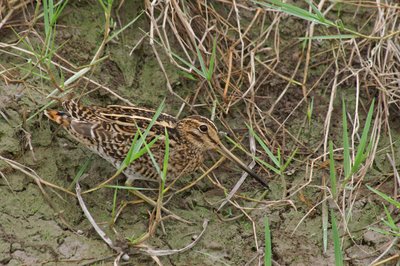
A 'Swintail' Snipe freezes to avoid detection.
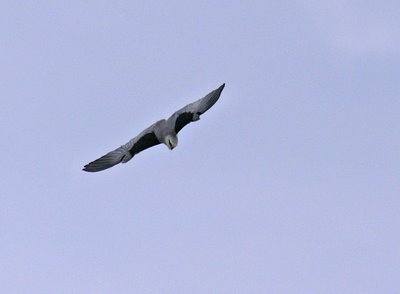
Black-winged Kites hunt very much in the manner of Kestrels; hovering and then swooping down on their prey.
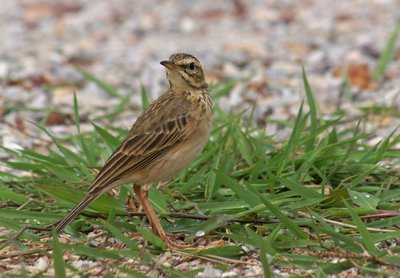
A Paddyfield Pipit just where it should be - in a paddyfield!
Finally, though, I came across an area of paddy being harvested by two huge yellow combine harvesters on caterpillar tracks, and here the air was full of dust and hirundines.

They were mostly Red-rumped Swallows, with many Barn Swallows and at least one Sand Martin. Sand Martin is not on the official list of birds that have been recorded in the state, though I did see one last year.

One of several hundred Red-rumped Swallows.
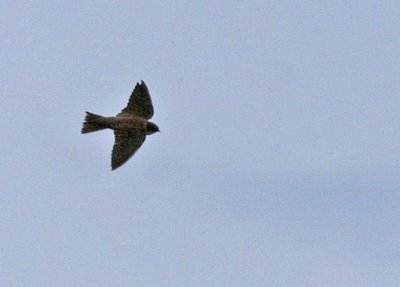
A Sand Martin. The frequency with which I was able to pick out a lone Sand Martin amongst all the other birds suggested to me that there may have been more than one.

The dark breastband and belly markings rule out the similar Pale Martin, which could conceivably occur.
There were also hundreds of Yellow Wagtails hawking insects on the newly cut paddy-stems. I spent a while looking through them but failed to find a Citrine Wagtail or anything more unusual. Four Black Kites hung on the wind in the hope of catching rats.

What are YOU looking at?! A Blue-tailed Bee-eater stares me down.
